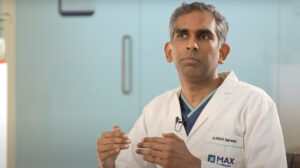NEW YORK (Reuters Health) – If recognized right away, most bile duct injuries related to laparoscopic cholecystectomy should be repaired quickly in a tertiary hepatobiliary center — within 3 days at most, say the authors of a new paper.
If the injuries are not immediately recognized, however, the researchers would delay surgery for at least 6 weeks, they write in the August Archives of Surgery.
But the authors of an invited critique disagree, suggesting that the timing of repair should be dictated by the extent of the bile duct injury.
“Both approaches are reasonable,” senior author Dr. Alice C. Wei, from Toronto General Hospital, told Reuters Health. “However, our data show that bile duct injuries can be repaired safely within 24 hours.”
Dr. Wei’s team reviewed data on 69 patients who had major bile duct injuries (incurred during laparoscopic gallbladder surgery) repaired between 1992 and 2007. Patients with bile leak or intra-abdominal sepsis received perioperative antibiotics.
The researchers’ policy was to repair these bile duct injuries at the time they were recognized.
In this series, 10 patients had leaks that were immediately obvious during the surgery. Thirteen patients (19%) had immediate repair (within 72 hours after cholecystectomy), 34 (49%) had repair between 3 days and 6 weeks afterward, and 22 (32%) had late repair (after 6 weeks). Forty-one patients had Roux en-Y hepaticojejunostomies, 24 had choledochojejunostomies, 3 had right hepatectomy with biliary reconstruction, and 1 had primary common bile duct repair.
Thirteen patients had complications during hospitalization within the first 30 days, most commonly cholangitis, intra-abdominal abscess and wound infection.
There were longer term complications in 11 patients, including 10 who had bile duct stricture.
Complications were not linked with sex, age, bile leak, hospital of origin, jaundice, sepsis, complex bile duct injury, type of repair, or timing of repair.
However, repair during the intermediate period (between 3 days and 6 weeks) put patients at higher risk for biliary stricture (p = 0.03), as did the presence of preoperative bile leak (p = 0.02).
The authors explain that bile contamination in the peritoneal cavity may be linked to inflammation in the surgical bed and ultimately to biliary strictures, and that acute inflammation related to the recent cholecystectomy would be maximal during the intermediate period.
Dr. Wei says that even though laparoscopic cholecystectomy has a slightly higher risk of bile duct injury than open surgery, it is still considered the better option. She said the keys to success are to be aware of patient anatomy or previous abdominal disease that may make the procedure more complicated, and to remain alert to injuries that might occur so they can be repaired as quickly as possible.
Dr. Delawir Kahn and associates at the University of Cape Town Health Sciences Faculty, South Africa, comment in their critique that “a major factor bedeviling management and optimal repair is that most bile duct injuries are not recognized during the laparoscopic cholecystectomy and only present later, by which time the patient may be septic with infected bile collections, cholangitis, hypoalbuminemia, and jaundice.”
In that case, “all bile and infected collections (should) first be adequately drained either percutaneously or by repeated laparoscopy,” they say. “Once effective biliary drainage has been achieved, there seldom is a need for urgent repair.”
Reference:
Bile Duct Injuries Associated With Laparoscopic Cholecystectomy
Arch Surg 2010;145:757-763.




